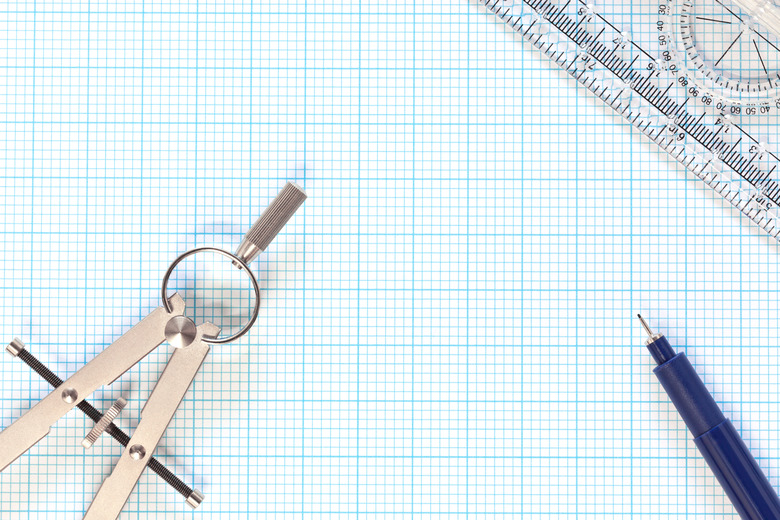How To Convert Perimeter Length To Area
The perimeter of a shape is the total distance around it, while area describes the amount of surface the shape uses or covers. Perimeter and area calculation methods differ for every kind of shape. For instance, while you can find the area of a rectangle simply by multiplying its length by its width, a circle requires a more complex calculation. Learn to convert the most basic shapes' perimeters to areas and you can later progress to compound shapes.
Square Perimeters
1. Divide Perimeter by 4
Divide the perimeter by 4 to obtain the length of each side, since all four sides of a square are equal. For example, a square with a perimeter of 36 inches would have sides that measure 9 inches each because
\(36 ÷ 4 = 9\)
2. Square Length of Side
Square the length of one side. For a square with 9-inch sides, work out
\(9 × 9 = 81\)
3. Add Unit of Measurement
Add the proper unit of measure to the area. A square with a perimeter of 36 inches has an area of 81 square inches.
Rectangle Perimeters
1. Work out Length of Base and Height
Determine the length of both the base and the height. These are the sides that are not parallel to one another. For example, say you have a rectangle with a base of 6 cm and a height of 7 cm.
2. Multiply Base by Height
Multiply the base by the height. Work out
\(6 × 7 = 42\)
3. Add Unit of Measurement
Add the proper unit of measure. In this example, the area of the rectangle is 42 cm square.
Triangle Perimeters
1. Work out Length of Base
Determine the length of the base of the triangle. For example, say you have a triangle with a base of 3 feet.
2. Work out Height
Calculate the height of the triangle. Say you have a triangle with a height of 12 feet.
3. Multiply Base by Height
Multiply the length of the base by the length of the height. Work out
\(3 × 12 = 36\)
4. Divide by 2
Divide by 2. Work out
\(36 ÷ 2 = 18\)
5. Add Unit of Measurement
Add the proper unit of measure. The area of the triangle is 18 square feet.
Circle Circumference
1. Divide Perimeter by pi
Divide the circle's perimeter, also known as the circumference, by pi (3.14159265) to get the diameter of the circle. For example, say you have a circle with a circumference of 40 inches. Work out
\(40 ÷ 3.14159265 = 12.732\)
2. Divide Diameter by 2
Divide the diameter by 2 to give you the length of the radius. Work out
\(12.732 ÷ 2 = 6.366\)
3. Square Radius
Multiply the radius by itself. In this example, work out
\(6.366 × 6.366 = 40.526\)
4. Multiply by pi
Multiply by pi (3.14159265). Work out
\(40.526 × 3.14159265 = 127.316\)
5. Add Unit of Measurement
Add the proper unit of measure. The area of the circle is 127.316 square inches.
Cite This Article
MLA
Fitzgerald, Kristin N.. "How To Convert Perimeter Length To Area" sciencing.com, https://www.sciencing.com/convert-perimeter-length-area-8537634/. 1 December 2020.
APA
Fitzgerald, Kristin N.. (2020, December 1). How To Convert Perimeter Length To Area. sciencing.com. Retrieved from https://www.sciencing.com/convert-perimeter-length-area-8537634/
Chicago
Fitzgerald, Kristin N.. How To Convert Perimeter Length To Area last modified March 24, 2022. https://www.sciencing.com/convert-perimeter-length-area-8537634/
